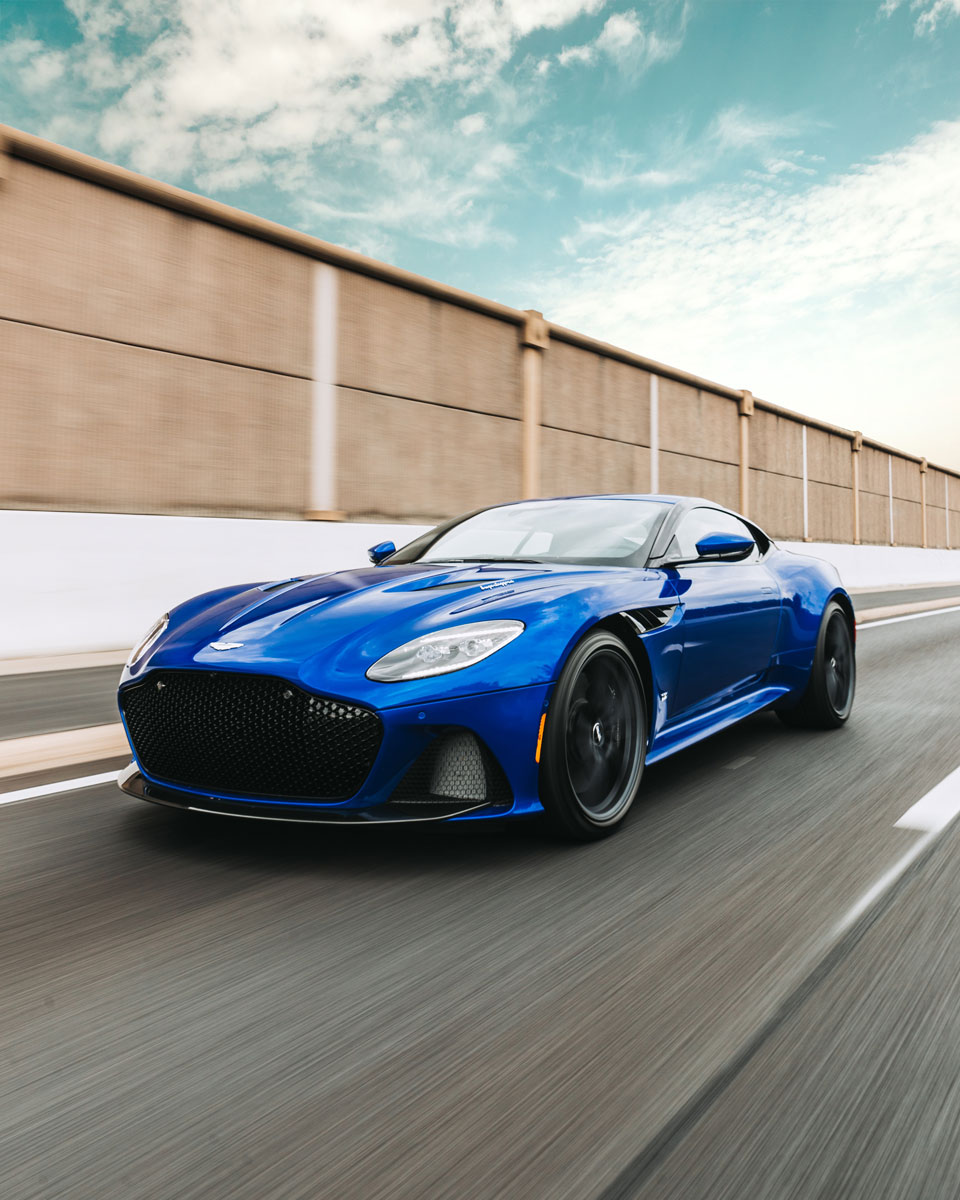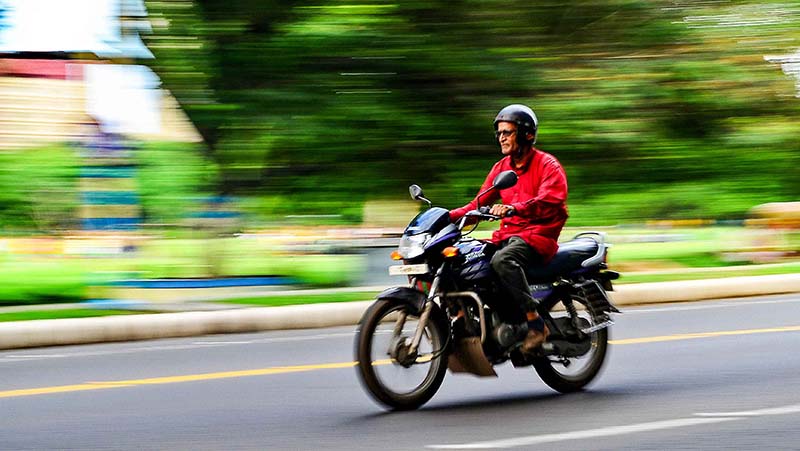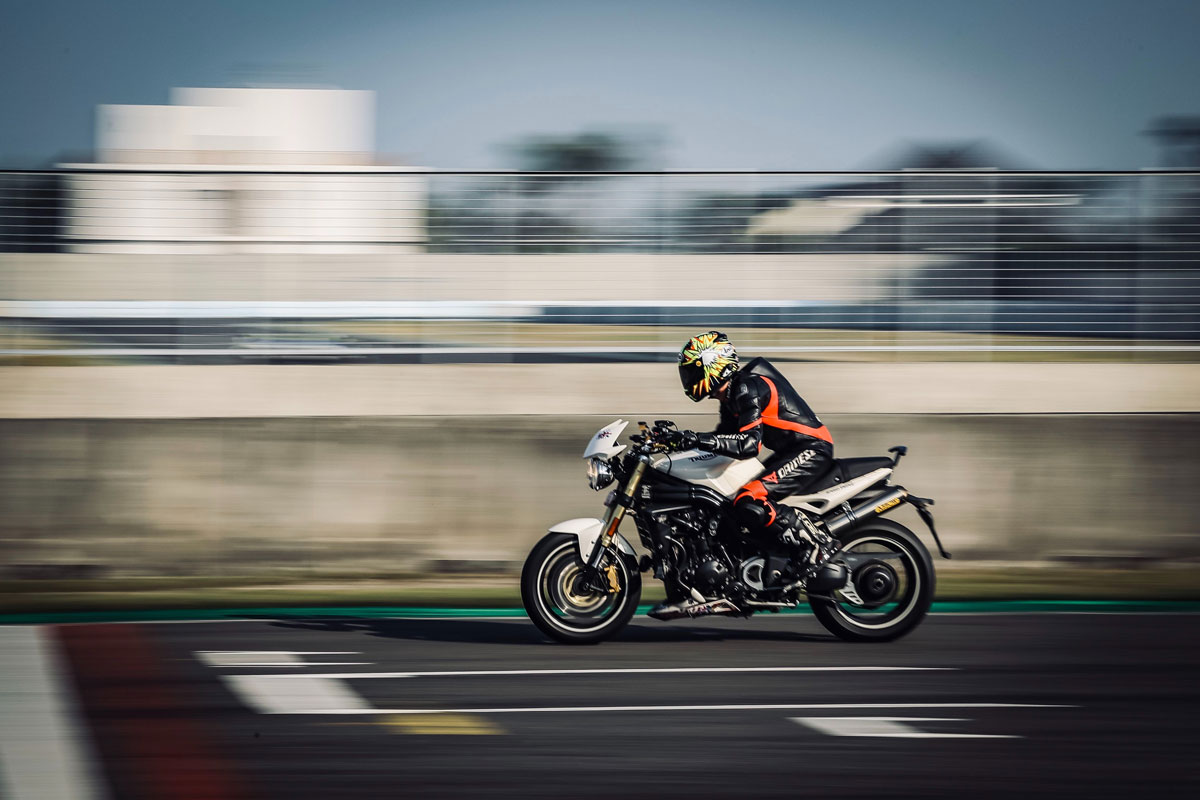Capturing infuse speed is possible in still photography through Panning. It is a technique to photograph moving subjects. You can frame a moving subject using 3 ways.

a) High shutter speed: Subject, foreground and background will be freeze and you will get a razor sharp image.
b) Slow shutter speed: Subject produce a blurry image. Sometimes it looks like 2 to 3 pictures are merged in a same frame or produce a ghost image.
c) Slower shutter speed with blurry background: Panning technique is required for it. Viewers’ read the picture with a feeling that subject is moving.
Panning in photography to infuse speed in a still picture
The basic idea behind panning as a technique is that to pan or move your camera along with the moving subject in a certain time frame to get a relatively sharp image but a blurred background.
This technique needs skill-set where practice is the key factor to get the right image. Panning gives a feeling of movement and speed in an image.
It is particularly useful for racing car, bicycle race, running car or athletic meet of 100meter, 200-meter run, skiing and so on. I know the next questions arising in your mind is “how is it possible?” So, let’s try to know the basics of technique.

Steps for Panning technique practice
- Choose a location where traffic is running one way. Put yourself and camera in a safe distance from the traffic.
- Locate a place where background is symmetrical or monotonous. Distraction should be avoided. Buildings, greenery, sports complex against the spectators’ bench etc. For Kolkata photo artists, choose the location near Victoria Memorial Hall front gate or Academy of fine arts and so on for practicing panning technique. Single colour or plain background do the best job for panning in moving subject.
- You need at least an entry level DSLR camera. Choose shutter priority mode.
- Check the light condition and calculate the right exposure. Exposure = ISO + Shutter speed + Aperture. For example: ISO 100 + 1/125+f/8.
- Lower the shutter speed like 1/60, 1/30 or 1/15 subject to the speed of the vehicle or athlete.
- Small aperture like f/5.6, f/8 are good option depending on light condition.
- A single point focus is a good option for any photography same as for panning technique.
- Choose auto focus mode. Some experts prefer manual mode. You can also choose manual mode but focus the area first where you have framed the subject. A shutter lag for entry level DSLR also require manual mode. shutter lag means after clicking a subject, shutter works lately and what the picture you want may be produce another.
- Choose AF-C for Nikon and AI-Servo for Canon.
- Position yourself in a place where you view the subject will not be obstructed by anyone or anything else.
- Use a longer focal length lens. For example 55-200mm or 55-250mm telephoto lens.
- You may use monopod or tripod with swiveling head. A little tilt of camera produce more dynamic moving in the picture.
- For handheld shot, attach your arms with your body when moving camera and twist your hips instead of head and arms.]
- Set your camera parallel to the subject.
- Release the shutter (click) when the subject cross at the middle of the frame.
- Using flash (if subject is close to camera or the light hit and send feedback from subject to camera) is a great way of increasing impact on the frame. The idea is to balance the exposure of the ambient light and flash and use a slower shutter speed because the flash will freeze the action to give your shot a focal point.
- Track the subject using viewfinder.
- Focus a small area of the subject like the bicyclist eye or the door handle of the car and so on. It means that the smaller a point your train your focus on, the less movement you will be tolerant to.
- Get – Set – Click: Follow the subject, focus a small area and when it comes at the center of the frame click the shutter button but do not stop hip moving or swivel head of monopod. It seems look like a continuous process which creates the trick of background blur and image tends to focus.

Remember to continue panning well after you have finished shooting, because stopping too early can create a jerky movement, which will spoil the movement photography.
Now it’s your turn for experimenting with shutter speed, aperture, hip or tripod movement. Best of luck in advance. Hope you like this article and read till last.
Happy Clicking, Happy Sharing.

Darun sir.Learnt a lot from this article.